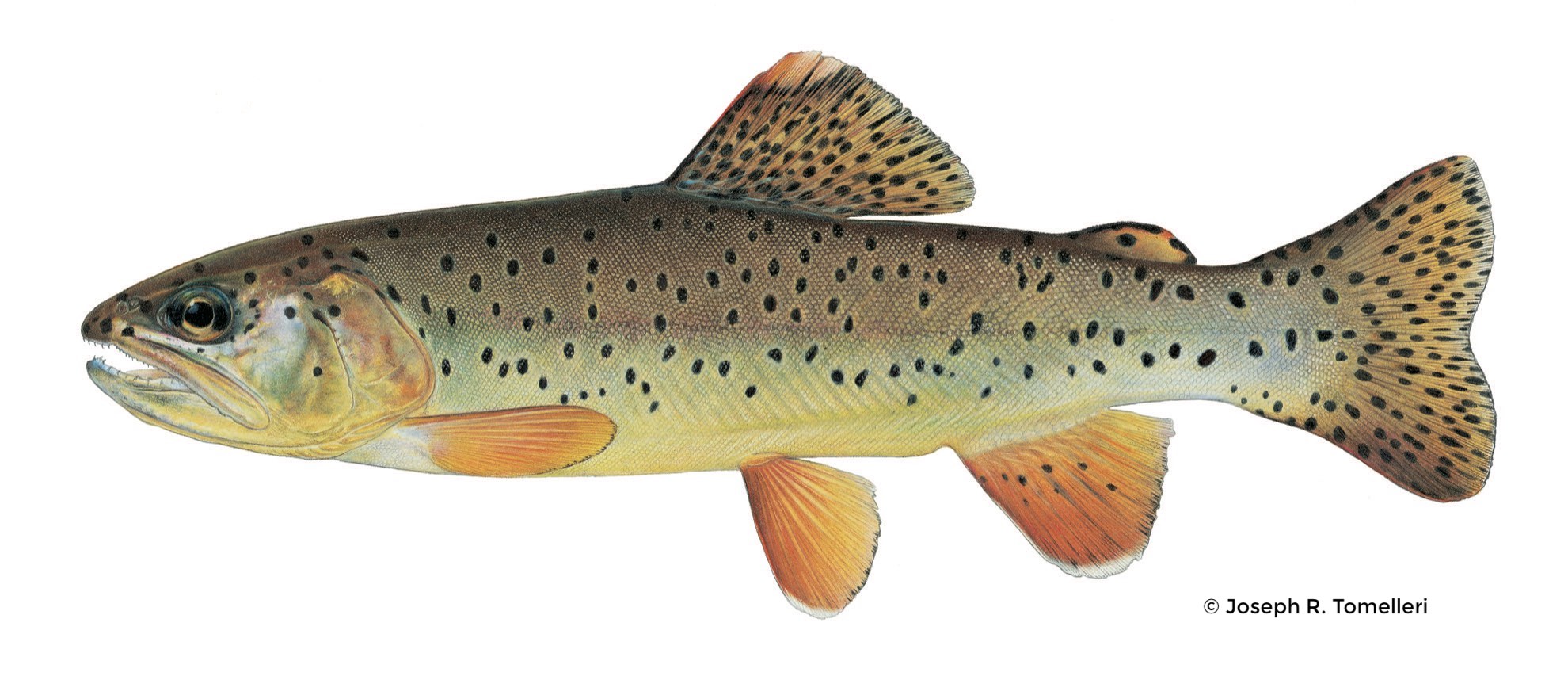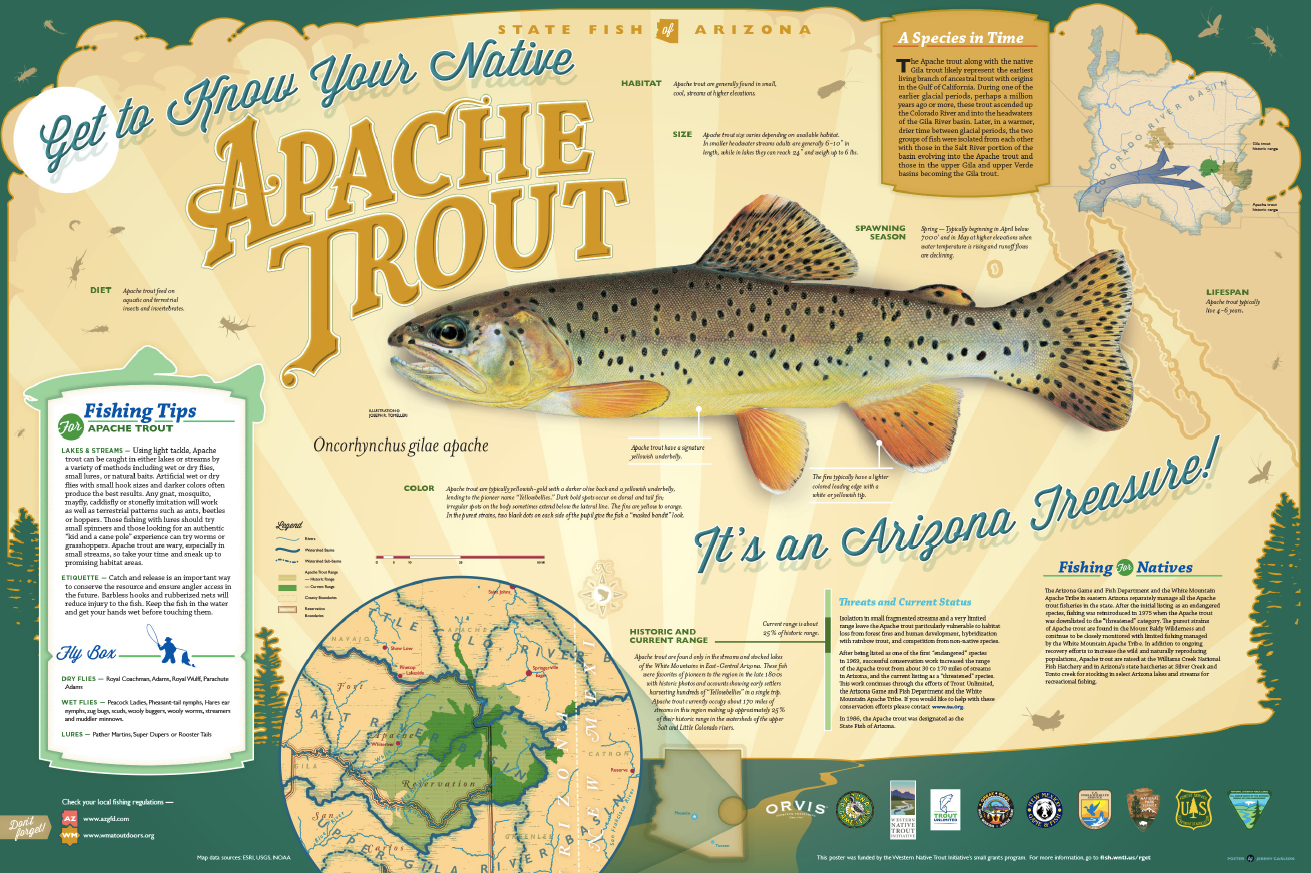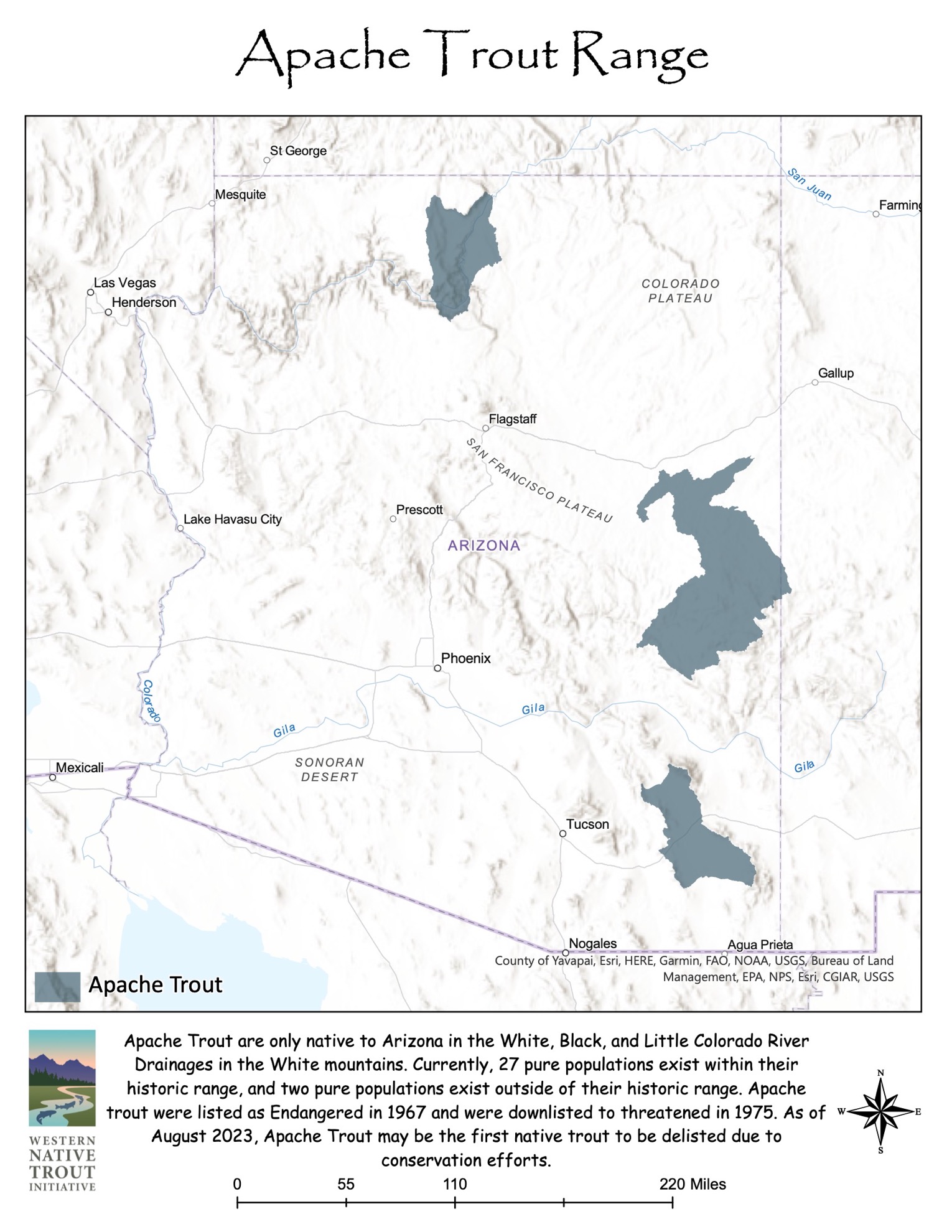
The Apache Trout (Oncorhynchus apache) is one of only two trout native to Arizona. Designated as Arizona’s State Fish, the Apache Trout historically occupied streams and rivers in the upper White, Black, and Little Colorado River drainages in the White Mountains of east-central Arizona. Currently, 27 pure (non-hybridized) Apache Trout populations exist within their historical range in Gila, Apache, and Greenlee counties of Arizona, on lands of the Fort Apache Indian Reservation (FAIR) and Apache-Sitgreaves National Forest (ASNF). Thirteen natural populations occur on the FAIR, three reestablished populations occur on the FAIR, nine reestablished populations occur in the ASNF, and two reestablished populations occur in streams on both the FAIR and ASNF. Two streams outside of historical range have pure replicate populations, North Canyon Creek (Ord Creek stock) and Grant Creek. North Canyon Creek received Ord Creek stock in the early 1960s. The natural population in Ord Creek was compromised by brook trout and was renovated and replaced with replicated Ord Creek stock from Coyote (ASNF) and North Canyon (North Kaibab National Forest)
The Apache Trout was first listed as an Endangered Species on March 11, 1967 (32 FR 4001). It was downlisted to threatened in July 1975 (40 FR 29863, Final Special Rule, 17.44(a)) based on recovery actions and a reanalysis of data. The down-listing allowed state, tribal, and federal agencies and partners to conduct management actions under the Recovery Plan, regulate take of the species, and establish sport fishing opportunities. The Recovery Plan was completed in 1979, revised in 1983 and 2009. In September 2024, thanks to decades of conservation efforts led by the White Mountain Apache Tribe Game and Fish, along with partners such as the U.S. Fish and Wildlife Service, Arizona Game and Fish Department, U.S. Forest Service, Trout Unlimited, and others, the Apache Trout was delisted and is now the first sport fish and trout species to be recovered and removed from the federal list of threatened and endangered species. Read more about the delisting HERE.


August 2023 Update on Apache Trout Status
August 2023 update on Apache Trout status: The U.S. Fish and Wildlife Service’s (USFWS) Aug. 10, 2023, announcement proposing that Apache Trout be removed from the federal list of Endangered and Threatened Species is a huge win for fish and wildlife conservation. If delisted, it would be the first native trout species and gamefish to be removed from the list due to conservation efforts. The Arizona Game and Fish Department, White Mountain Apache Tribe, Apaches-Sitgreaves National Forest, and Trout Unlimited signed onto the Apache Trout Cooperative Management Plan (CMP) in 2021. It outlines the management actions and step-down activities needed to achieve recovery and provide for long-term management if the Apache Trout is delisted. The USFWS delisting proposal was preceded by a 5-year review and 2021 species status assessment, which included the best available scientific information. The assessment evaluated the species’ current needs, condition, and threats, in addition to modeling future scenarios. The most recent 5-year review, published Aug. 23, 2022, recommended delisting this species due to recovery. More information about 5-year status reviews is available on the USFWS website.
Comments on the proposed delisting must be received within 60 days of its Aug. 10 publication in the Federal Register. Information on how to submit comments is available at www.regulations.gov by searching under docket number FWS-R2-ES-2022-0115.
Frequently asked questions for the proposed delisting can be found on the USFWS website here.
Apache Trout have an olive-yellow body, with a yellow or golden belly. They can grow up to 20 inches long, but most grow only to 9 inches because of the smaller streams in which they live.
Since 2007, the Western Native Trout Initiative has provided $312,700 in funding to 7 projects to benefit Apache Trout. Projects have ranged from barrier construction/restoration to keep non-native trout out of conservation waters, habitat assessment after catastrophic wildfires, and public outreach and education.
Additional Resources
- Read the 2009 Apache Trout Recovery Plan.
- Read the National Fish and Wildlife Foundation’s Apache Trout Business plan.
- Click here to read about Arizona Game and Fish Department’s Apache Trout conservation work.
- Read about the White Mountain Apache Tribe’s Apache Trout conservation work.
- Read Craig Springer’s April 2017 article about Apache Trout recovery efforts.
- Watch this video of Apache Trout spawning at the Alchesay-Williams Creek National Fish Hatchery.
